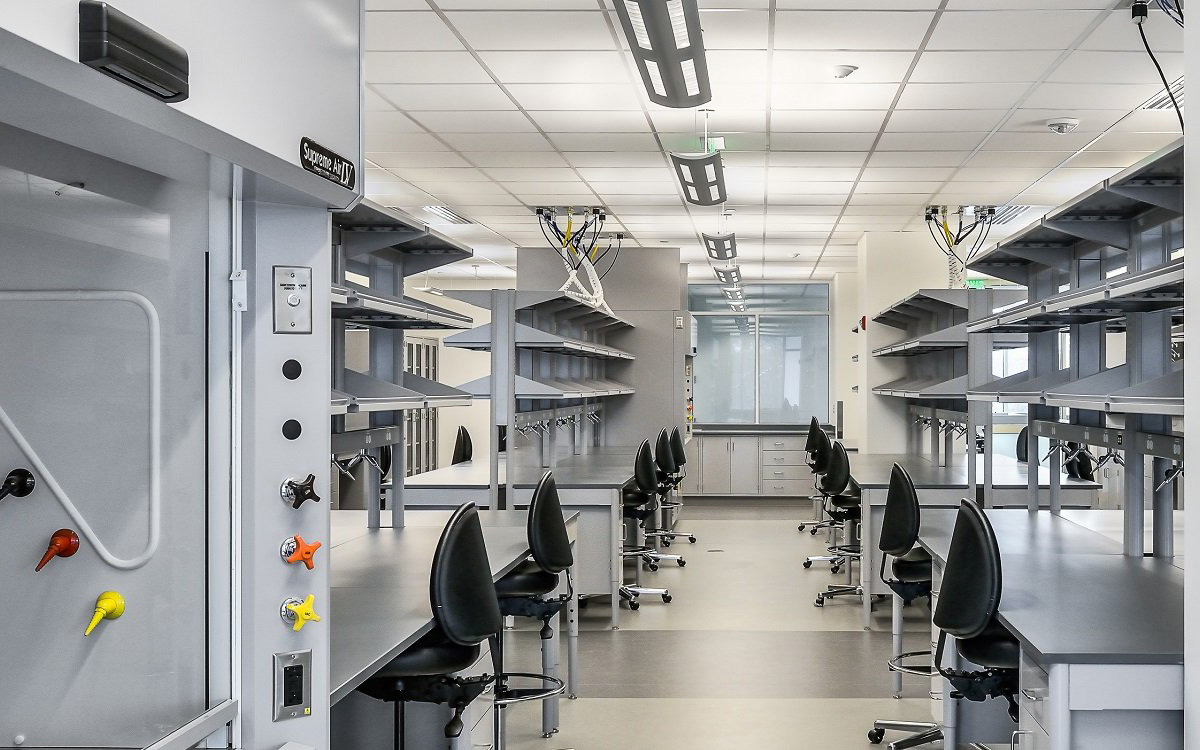Safety of Research Chemistry Laboratory Chapter 1
Date: 2022-01-19 Source: RUANQI Classification: Resources
#This series is translated from the safety guidance book on research chemistry laboratory printed by the chemical safety committee of the Joint Council of American Chemical Societies. It is the best practical guide for freshmen and sophomores#
Chapter 1 keeping safe in the laboratory
Introduction
Chemical laboratories have more common hazards than other scientific laboratories. Interestingly, the characteristics we need in some chemicals are also the characteristics that make them hazardous. For example, we know the fact that some organic solvents dissolve organic molecules very well, but the same properties make them dry our skin. We use the reactions of acids and bases to achieve chemical changes, but their reactivity also makes them dangerous if they come into contact with the skin or are ingested. We know the fact that liquid nitrogen and dry ice are very cold, because sometimes we need very low temperature, but these substances are dangerous for barehanded operation because they are very cold. We know that natural gas burns (in Bunsen lamps), but if it accumulates in an enclosed space, sparks or flames can cause an explosion.
There are dangers in any laboratory that uses chemicals - chemical laboratories or other scientific laboratories. Well educated chemists and well-educated chemistry students need to understand the hazards of chemicals and various chemical processes in order to work safely in the laboratory. In order to work safely, we should not only identify the danger, but also evaluate the actual risk it brings. For example, organic solvents may be very flammable, but if the solvent is well packed in bottles or the amount of solvent is very small and the ignition source is excluded from the area, the risk of a particular laboratory is low. Similarly, a chemical may be highly toxic by ingestion, but the risk is low if we avoid ingestion conditions. Finally, strong acids may be very corrosive to the skin, but if we take measures to avoid skin contact, the risk will be reduced. In the chemical laboratory, there are always some dangers and risks. One of the objectives of this manual is to help you learn how to identify hazards and how to minimize risks.
Your teacher asks you to read this manual so that you can work safely in the chemistry laboratory. Conducting chemical experiments can be interesting, mentally satisfying, and productive -- but only if they are carried out as safely as possible. At the end of each day in the lab, the goal is to get you home as you came -- without injury or illness from your lab experience.
In order to work safely in your first laboratory course, you will learn many rules about chemicals and how to deal with them. In fact, this booklet is also full of rules. However, there are safety principles (ramp) behind all these rules, and learning these principles is also the goal of this manual. The rules in this manual cover many situations you encounter in your first and second year chemistry courses. However, in more advanced courses and research projects, you may encounter many other hazards. Therefore, while learning some rules, you should also start to formulate safety principles and concepts that can be applied to your future work and life, even if you may not work in a chemical laboratory. For non chemical science majors, your "non chemical" laboratory usually uses chemicals. As the saying goes, "chemicals don't know which laboratory they will be in." Many chemicals are also used at home, so the safe handling and use of chemicals have a wide range of applications.
■ Ramp for safety
Let's further understand the concept of risk management and establish a model of how to work as safely as possible in the laboratory. A simple example of safe work in the laboratory is:
Recognize the hazards.
Assess the risk of hazards.
Minimize the risk of danger.
Prepare for emergencies.
This is called RAMP [1] because of the verbs in the four statements. It is easy to remember and is the key to create safety culture in chemical experiment.
Learning to identify hazards is one of the main objectives of this manual. In Chapter 3, you will learn about the categories of hazards and the general characteristics of these hazards. It also discusses assessing and minimizing risks to help you understand how to work safely when dealing with inherently hazardous compounds or procedures.
Finally, there are several reasons for possible adverse events in the laboratory, so it is wise and prudent to prepare for emergencies. If you follow the ramp rule in all laboratories and in all experiments, the likelihood of injury or illness is very low - probably almost zero. In fact, due to good safety education, these inherent dangerous environments are actually very safe workplaces.
The safety of research chemistry laboratory is designed to be used for teaching safety in the first two years of chemistry course. At these early stages, most laboratory experiments will be carefully reviewed by your organization's chemistry department to ensure safety. The risk of these experiments has been minimized, and a large number of monitoring has been conducted for these early laboratory meetings.
■ In your future: learn more about ramp
After these two years, you will participate in more advanced laboratories to provide greater autonomy for independent learning. These advanced laboratory courses will require you to be more responsible and learn more about laboratory hazards and risks. You need to work harder to comply with safety principles: identify hazards, assess and minimize the risk of hazards, and always be prepared for emergencies. Ramp principles also apply to your daily life!
Safety Culture and Your Role in It
The safety knowledge and skills you learn in chemistry courses are greatly influenced by the safety culture of your organization. Part of a strong safety culture requires you to do your part. There are four areas that need your attention: leadership, learning safety, establishing a positive safety attitude, and learning from safety accidents. By reading creating a safety culture in academic institutions [2], you can learn more about safety culture.
In an organization, safety culture plays a vital role. Although you may not be a leader in your organization, you can be a personal security leader. As with other aspects of life, good examples encourage safety. You can follow the safety instructions given to you by the teacher, always wear the personal protective equipment you need (such as goggles, gloves and laboratory coat), report all safety accidents (no matter how minor), and take time to consider the risks involved in the experiment.
When you study chemistry, you will learn about the laboratory and chemical hazards and how to minimize the risk of these hazards in the laboratory - the elements of laboratory safety. You really learn and understand the hazards in the laboratory, which is very important for your personal safety (and the safety of others). This understanding can help protect you or others from harm or other adverse events. Understanding why chemicals or situations are dangerous is a key part of learning safety. For example, if you know why something is flammable, you can better use flammable materials in the future. When you study chemistry, you should try to learn as much safety as possible. We hope that you will learn safety in the whole undergraduate experience and will not regard safety as a set of memory rules. Safety education includes building substantive knowledge of various chemical and laboratory hazards, learning how to evaluate the risks of these hazards, learning how to minimize the risks of all hazards you may encounter, and preparing for possible emergencies in the laboratory to deal with these hazards -- we're talking about ramp here.
If you continue to learn safety during your undergraduate education and its importance is constantly strengthened, you should establish a positive safety attitude, sometimes called safety ethics. If you always spend time checking the hazards and safety measures of each experiment, you will also maintain a positive safety attitude. Correct safety attitude is reflected in Safety Ethics: value safety, safety work, prevent dangerous behavior, promote safety, and bear safety responsibilit [3]. Prospective employers may expect and require a positive safety attitude.
Finally, although we all strive to ensure everyone's safety in laboratory operation, adverse safety accidents sometimes occur. Most knowledge about safety is learned from mistakes or accidents. When these events occur - even minor events - they need to be shared so that we can all learn from our mistakes. Sharing these events should always be done in a non sensitive manner. Study courses are an important part of the work of our scientists, so we should keep this in mind when studying chemistry and safety.
As you said in the introductory chapter, safety plays a key role in chemistry. Safety issues apply to all chemistry and related fields. Safety is actually a chemical discipline, just like inorganic, organic, analytical, physical or biochemical. Everyone who uses chemistry in his career needs enough knowledge, skills and safety attitude to work safely in the laboratory. In chemistry and science education, keep safety at the forefront and it will provide you with good services.
Summary
Working in the laboratory requires you to learn to apply the ramp concept: identify hazards, assess the risk of hazards, minimize the risk of hazards, and prepare for emergencies. Understanding the hazards, risks and reasons for procedures and processes designed to protect you is the basis of safety rules. If you understand the reasons, you are more likely to follow safety procedures and safety rules.
Reference resources:
[1] Hill, R. H.; Finster, D. C. Laboratory Safety for Chemistry Students,2nd ed.; John Wiley & Sons: Hoboken, NJ, 2016.
[2] ACS Joint Board–Council Committee on Chemical Safety. Creating SafetyCultures in Academic Institutions: A Report of the Safety Culture Task Force ofthe ACS Committee on Chemical Safety; American Chemical Society:Washington, DC, 2012. www.acs.org/content/dam/acsorg/about/governance/committees/chemicalsafety/academic-safety-culture-report-final-v2.pdf(accessed March 6, 2017).
[3] Hill, R. H. The Safety Ethic: Where Can You Get One? Chem. HealthSafety. 2003, 10, 8–11. http://dx.doi.org/10.1016/S1074-9098(03)00025-X




